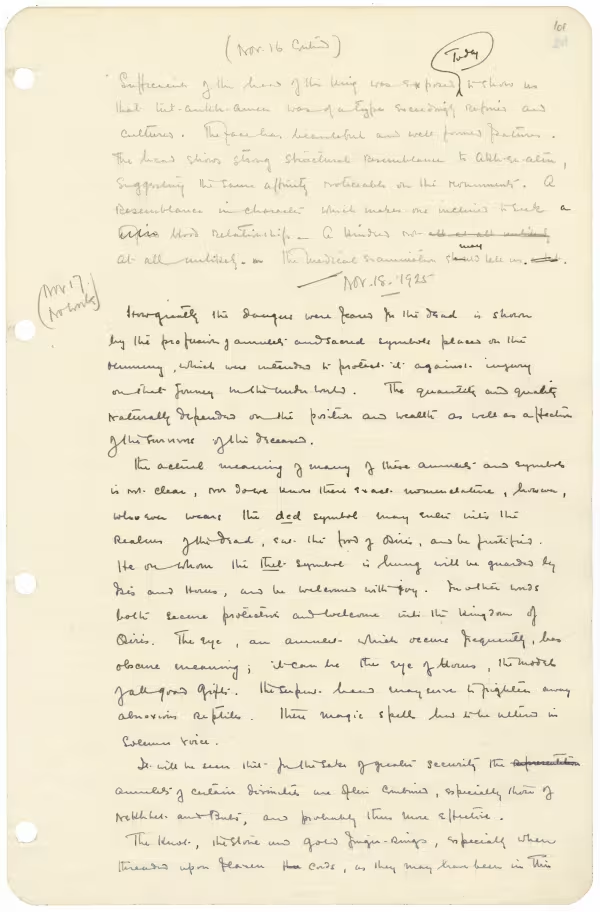TAA i.2.3.101

© Griffith Institute,
University of Oxford
(Nov. 16 Continued)
Sufficient of the head of the King was exposed <today> to show us
that Tut-ankh-Amen was of a type exceedingly refined and
cultured. The face has beautiful and well formed features.
The head shows strong structural resemblance to Akh-en-Aten,
suggesting the same affinity noticeable on the monuments. A
resemblance in character which makes one inclined to seek <a>
to find blood relationship ./< - > A kindred not all at all unlikely
at all unlikely,/<.> an The medical examination should <may> tell us<.> a lot.
<Nov. 17.
No work>
Nov. 18. 1925
How greatly the dangers were feared for the dead is shown
by the profusion of amulets and sacred symbols placed on the
Mummy, which were intended to protect it against injury
on that journey in the under world. The quantity and quality
naturally depended on the position and wealth as well as affection
of the survivors of the deceased.
The actual meaning of many of these amulets and symbols
is not clear, nor do we know their exact nomenclature, however,
whoever wears the ded symbol may enter into the
realms of the dead, eat the food of Osiris, and be justified.
He on whom the thet symbol is hung will be guarded by
Isis and Horus, and be welcomed with g/<j>oy. In other words
both secure protection and welcome into the Kingdom of
Osiris. The eye, an amulet which occurs frequently, has
obscure meaning; it can be the eye of Horus, the model
of all good gifts. The serpent head may serve to frighten away
obnoxious reptiles. These magic spells had to be uttered in
solemn voice.
It will be seen that for the sake of greater security the representation
amulets of certain divinities are often combined, especially those of
Nekhbet and Buto, and probably thus more effective.
The knot, the stone and gold finger-rings, especially when
threaded upon flaxen thre cords, as they may have been in this